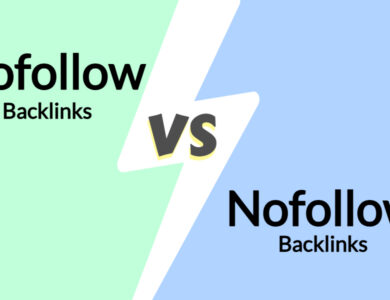
In the dynamic world of digital marketing, the relevance and influence of Click-Through Rate (CTR) on search engine rankings have been subjects of extensive discussion and analysis. As one of the most prominent metrics in online marketing, CTR represents the ratio of users who click on a specific link to the number of total users who view a page, advertisement, or other digital content. This article delves into the multifaceted role of CTR in shaping Google’s search rankings, offering insights into the complexities of search engine algorithms and the strategies for optimizing digital content.
The Essence of CTR and Its Measurement
CTR stands as a pivotal metric in understanding user engagement and content relevance. It’s calculated by dividing the number of clicks a link receives by the number of times the link is shown (impressions), then multiplying the result by 100 to get a percentage. This simple yet powerful metric offers immediate insights into the performance of search listings, ads, and email campaigns.
To accurately measure CTR, tools like Google Analytics come into play. They provide detailed data, allowing webmasters and marketers to gauge the effectiveness of their content and strategies. A high CTR generally indicates that a piece of content is resonating well with the audience, effectively capturing their attention and compelling them to engage further.
Google’s Ranking Algorithm: An Overview
Google’s search algorithm is a complex and ever-evolving beast. It considers a myriad of factors to rank websites and content. Known factors include content quality, relevance, backlinks, mobile-friendliness, page speed, and user experience signals. While Google has been somewhat opaque about the exact workings of its algorithm, it’s clear that the ultimate goal is to provide the most relevant and useful results to users.
In this context, user engagement signals like CTR are believed to play a role. The logic is straightforward: if a significant number of users choose a particular search result, it likely means that the content is relevant to their query. However, Google has been careful in its statements regarding the direct influence of CTR on rankings, leading to ongoing debates in the SEO community.
CTR’s Role in Google’s Search Rankings
The debate around CTR’s impact on Google rankings stems from conflicting views and evidence. Some SEO experts argue that a higher CTR leads to better rankings, citing case studies and correlations observed in search results. They suggest that Google’s algorithm considers CTR as a sign of relevance and quality, using it to refine search results over time.
On the other hand, Google has occasionally downplayed the direct impact of CTR on rankings. The company points to the complexity of its algorithm and the myriad factors involved in ranking decisions. This stance suggests that while CTR may be a component of the algorithm, it’s not a predominant factor.
Despite Google’s official stance, the consensus among many SEO professionals is that CTR does influence rankings, albeit indirectly. The argument is that high CTR is often a byproduct of high-quality, relevant content, which Google aims to prioritize. Therefore, while CTR itself might not be a direct ranking factor, it is closely tied to other elements that are.
CTR, User Experience, and Search Intent
The relationship between CTR, user experience, and search intent is pivotal in understanding its potential impact on search rankings. A high CTR can be indicative of a successful match between the user’s search intent and the content provided. When users consistently choose a particular search result, it suggests that the content fulfills their needs or answers their queries effectively.
This intersection of CTR, user satisfaction, and content relevance highlights the importance of aligning content with user intent. Websites that successfully address the needs and questions of their audience tend to have higher CTRs, which, in turn, could positively influence their search rankings
10 Tips to Improve CTR
To improve the Click-Through Rate (CTR) of a webpage in Google search results, there are several effective strategies you can implement. These strategies focus on making your listing more appealing and relevant to users’ search queries. Here are some key tips:
- Optimize Title Tags: Your title tag is the first thing a user sees in search results. Make sure it’s compelling, relevant, and concise. Include primary keywords towards the beginning and ensure it accurately reflects the content of the page.
- Craft Descriptive Meta Descriptions: While meta descriptions don’t directly affect rankings, they can influence CTR. Write clear, engaging, and informative descriptions that tell searchers what to expect from your page.
- Use Structured Data: Implementing structured data (schema markup) can lead to rich snippets in search results, like star ratings, images, or additional information. These elements make your listing stand out and can significantly improve CTR.
- Improve URL Structure: A clean, readable URL structure can impact user perception. URLs that include keywords and are easy to understand can be more enticing to click on.
- Target Long-Tail Keywords: Long-tail keywords often have less competition and a more specific search intent. Pages optimized for these keywords can yield higher CTRs as they closely match what users are searching for.
- Optimize for Mobile: With the increasing prevalence of mobile searches, ensure your website is mobile-friendly. Mobile users are more likely to click on results that are easily accessible and readable on their devices.
- Use Engaging Snippets: Preview snippets or the first few lines of your content appearing in search results should be engaging. Start your articles or pages with compelling hooks.
- Analyze and Adapt: Use tools like Google Search Console to track your CTR and make adjustments based on performance. Look at pages with high CTR to understand what works for your audience.
- Leverage Social Proof: If your website or content has received accolades, awards, or positive reviews, mention these in your meta descriptions or titles to build trust.
- Experiment with A/B Testing: Try different versions of your titles and meta descriptions to see which ones yield a higher CTR. Keep track of changes and results to understand user preferences.
For more advanced and automated solutions to improve CTR, you might consider tools like ApexTraffic’s CTR Clicks Generator. This tool offers features designed to enhance the visibility and click-through rates of web pages in search results, helping you to optimize your website’s performance in a more streamlined and efficient way.
Remember, improving CTR is not just about getting more clicks. It’s about attracting the right audience to your website with relevant and engaging content that meets their needs and interests.








Thanks for all your efforts that you have put in this, It’s very interesting Blog…
I believe there are many who feel the same satisfaction as I read this article!